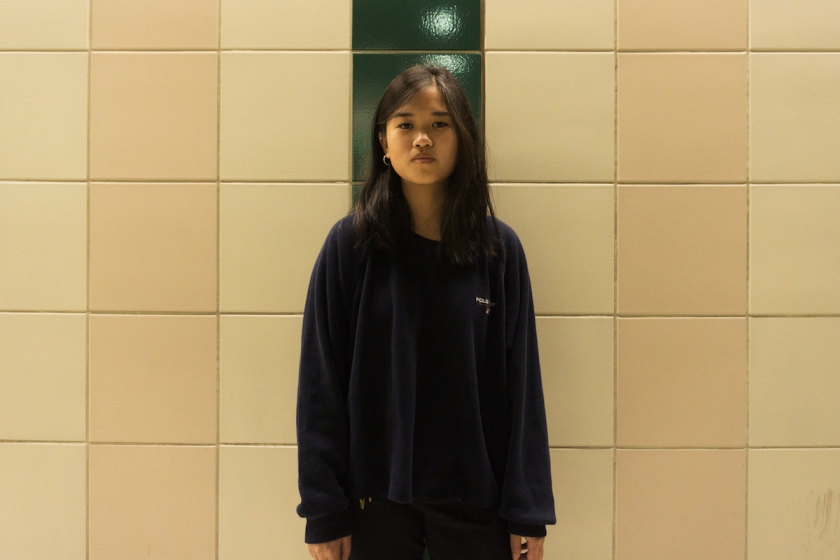For KPCC Take Two’s Tuesday Reviewsday this week we go from a collaboration of international L.A.-based artists to the streets of Kinshasa (via Paris) to a trip underneath our city. Listen to my chat with show host A. Martinez and read my more detailed written reviews, all right here.
The group’s name pretty much gives it away. Opium Moon‘s debut album is the soundtrack to an exotic, hazy, languorous dream, a sensual/spiritual trip into the mystic. “Drunk With the Great Starry Void,” a line from a Pablo Neruda poem used as the title of one of the songs, sums it up nicely.
But it’s not just that. Opium Moon, the album title as well as the group’s name, is a deep and involving meeting of distinctive great talents involving several rich cultural/musical traditions:
Violinist Lili Haydn is a Los Angeleno whose virtuosity and exploratory nature have been tapped by a vast array of artists from Led Zeppelin’s Robert Plant and Jimmy Page (she was featured on their “UnLEDded” project) to George Clinton’s P-Funk Allstars to Herbie Hancock to Josh Groban, not to mention countless movie and TV scores and her own wide-ranging projects. Bassist and electronicist Itai Disreali was raised on an Israeli kibbutz founded by his grandfather near Nazareth and in L.A. has developed his own compelling mix of Middle Eastern influences and jazz in the trio Maetar among many projects. Tehran native Hamid Saeidi is a master of the santoor, the ancient Persian hammered zither, and has crossed between Persian classical and modern styles. And percussionist MB Gordy has credits from Frank Zappa to Neil Diamond to the Los Angeles Philharmonic, and dozens of film and TV sessions as well.
The Persian-Israeli alliance is at the core of these long, slowly unfolding pieces, original group compositions/improvisations inspired by both folk and classical traditions of the region, the modal dastgāh systems, explicitly evoking the Sufi mysticism and its central poet, Rumi.
“How Can I Pray When All I See Is the Beloved” has Haydn peeling off some almost casual romantic Viennese classical licks that somehow complement Saiedi’s brittle santoor perfectly. A video for the song “Caravan” (not the Duke Ellington jazz-exotica classic) shows the interactions in detail. But that’s even more dynamic in concert, as you have a chance to see on Sunday at the Ann & Jerry Moss Theater of the New Roads School in Santa Monica, where they will be joined by Iran-born singer and multi-media performer Sussan Deyhim, a challenging and dynamic artist herself.
If Opium Moon is all dream state, come to the small Frogtown club Zebulon tomorrow (Wednesday 7/11) for a jolt of high-octane, central African musical caffeine from Jupiter & Okwess. Originating in Kinshasa, the capital of the Democratic Republic of Congo, but living in Paris in exile from the civil war-torn country, Jupiter Bokondji and band proved one of the big hits of this year’s New Orleans Jazz & Heritage Festival’s celebration of the city’s tricentennial and all the cultures that have fed into its vibrant musical life.
Frantic and frenetic are two words that come to mind with the performances, both live and on the new album “Kin Sonic,” and also fun — Bokondji, who has been creating intriguing takes on the sounds for more than 30 years, is an engagingly dynamic figure and the rest of the band seems constantly on the move, including the drummer Montana Kinunu, who wears one of several lucha libre masks while playing. But this is music tied to strife and exile, and speaks to those issues as it provides escape. A video for the song “Nzele Momi” shows that mix of joy and struggle.
It’s that mix that has attracted such collaborators as Blur’s Damon Albarn, who plays some keyboards on this album, and violinist Warren Ellis from Nick Cave’s Bad Seeds. And those guests in turn help give the music a bit more of a slick sound than what we hear in concert, the settings on the album crafted by French producer Marc-Antoine Moreau (who has worked with various African-originated acts). And through it, Bokondji’s ties to the Kinshasa scene that spawned the distortion-heavy Congotronics and the up-from-the-streets triumphs of Staff Benda Bilili (a band created in the community of disabled homeless people) remain strong. (A 2006 documentary, “Jupiter’s Dance,” spotlights his key roles there.) Whether in Paris or New Orleans or Frogtown, the spirit still connects to Kinshasa.

The New York subways have inspired songs through the years. The L.A. subways, not so much. So how about…. oh, never mind. Maybe “Crying on the Subway” isn’t exactly the ode to the Red Line the Metro folks might choose for a promotional campaign. The song, by singer-songwriter-musician Hana Vu, is set on a ride from the Valley to Downtown, subterranean run from that she has described as “purgatorial.”
Apart from that, even many in the transportation department might appreciate it. It’s a rather sophisticated song on several levels, the pay-off of someone who has been working hard on her craft for five years. Which means she started when she was 12 — she’s just 17 now. But the level of creativity and expression is impressive for any age, and worth noting that she created all the music, playing and singing every part, in her bedroom.
Whatever her age, there’s considerable a great maturity in this. But she also allows herself to be a teen, expressing concerns of youth, though the case can be made that these too figure in any age — isolation and inner turmoil in a fight for meaning and connection, wondering what it all adds up to. The EP title, “How Many Times Have You Driven By,” speaks of obsession with a tone of annoyance. And the in set’s most upbeat song, “Shallow,” she runs screaming from fear of getting caught in “wrong turns,” but seems to know that those turns can prove right. Shallow? That’s one thing she is definitely not.
